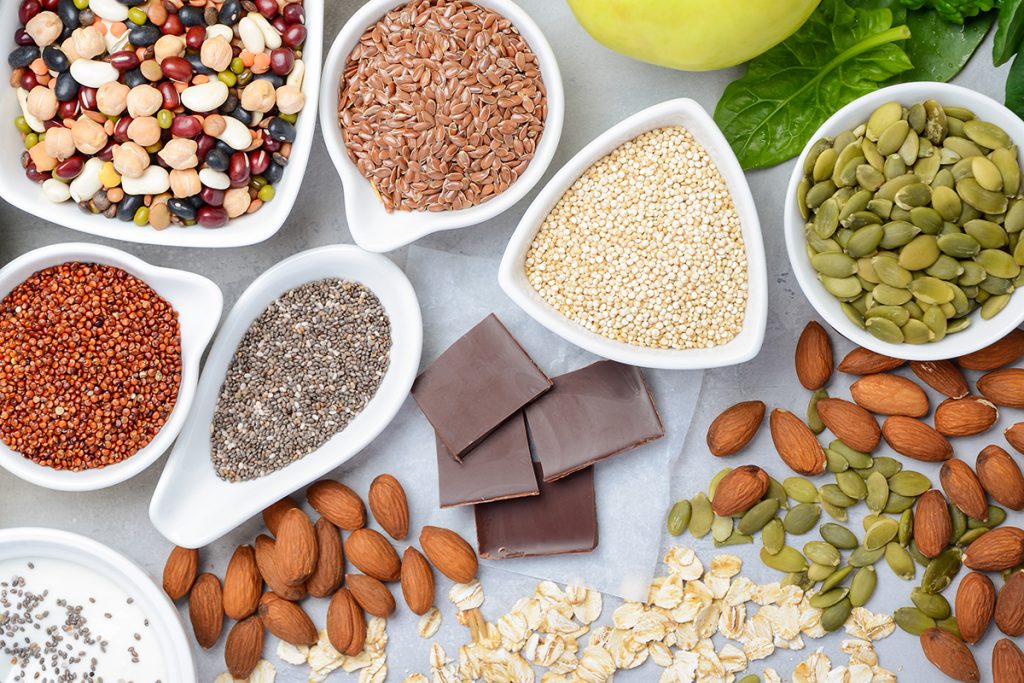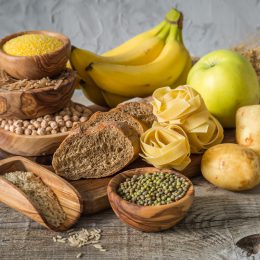Magnesium: Are You Getting Enough of This Essential Nutrient?
Magnesium is vital to your health, but many seniors don’t get enough. A dietitian breaks down what it does, how much you need, and the best food sources.

You probably know about some key nutrients you should be getting. Calcium, vitamin D, and iron are often talked about, especially for older adults. But there’s an important one that you might not be thinking about: magnesium.
This mineral is essential for your day-to-day life. And while very few older people are truly deficient, you may not be getting enough to function at your best. This is called magnesium insufficiency (as opposed to deficiency).
Surveys of what Americans eat suggest that only about half of people are eating sufficient amounts of magnesium. Here’s why magnesium is vital for our health, why you may not be getting enough, and how to ensure you’re reaching your goals.
Healthy eating and fitness go together! With SilverSneakers, you can choose from dozens of different Community classes, visit a participating fitness location, or join one of 20+ SilverSneakers LIVE online classes. Check your eligibility here.
Why Magnesium Is so Important
To say that magnesium plays a critical role in how our body’s function is an understatement. This mineral is a jack-of-all-trades.
It plays an important role in hundreds of body functions, including:
- Converting food into energy
- DNA production
- Muscle and nerve functioning
- Blood pressure regulation
- Blood sugar regulation
- Bone-building (you’ll often see magnesium combined with calcium in bone-fortifying supplements)
In short: nearly every cell in your body needs magnesium to function as it’s best.
The effects of a low-magnesium diet could build up over time. Research suggests that low magnesium may be linked to:
- High blood pressure
- Cardiovascular disease
- Type 2 diabetes
- Depression
- Lower bone mineral density and osteoporosis
Are You Getting Enough Magnesium?
Magnesium is in lots of different foods, but plant foods like vegetables, grains, beans, nuts, and seeds are some of the best sources. Interestingly, studies show that the level of magnesium in foods has been dropping over the last several decades.
Plant foods get magnesium from the soil they’re grown in. Researchers believe that changes in farming and climate change are affecting magnesium levels in the soil, which means foods are soaking up less magnesium as they grow. This could partly explain why magnesium insufficiency is so widespread in people.
Certain health conditions can also affect your magnesium intake. For instance, gastrointestinal (GI) diseases (such as Crohn’s disease) may cause a drop in magnesium due to chronic diarrhea.
People with diabetes are also at greater risk of low magnesium. When your blood sugar is high, your kidneys flush out the extra sugar, making you pee more. But magnesium is also lost in urine. That’s why diuretic medications can also lead to more magnesium loss.
Older adults may struggle to get enough magnesium, too. As you age, your gut tends to absorb less of certain nutrients, including magnesium, during digestion. Reduced appetite may also lead you to eat less magnesium-rich foods.
How to Get Enough Magnesium
It is possible to get enough magnesium simply by eating enough of the right foods. That includes plenty of grains, beans, nuts and seeds, and vegetables. Getting some of these foods every day will help you meet you daily needs.
By the way, the National Institutes of Health recommends that men over 50 get at least 420 milligrams and women over 50 at least 320 milligrams of magnesium a day.
What does that look like? Here’s a list of some top magnesium heavyweights and how much magnesium you’ll get from them:
Subscribe to our newsletter
It's quick and easy. You could be one of the 13 million people who are eligible.
Already a member? Click to discover our 15,000+ participating locations.
Follow Us
- Almonds: 50 mg per 2 tablespoons
- Avocado: 44 mg per 1 cup
- Black Beans: 130 mg per 1 cup cooked
- Chia Seeds: 70 mg per 2 tablespoons
- Chocolate (70-85% cocoa): 64 mg per 1 ounce
- Kale: 46 mg per 2 cups
- Lentils: 73 mg per 1 cup cooked
- Oats: 37 mg per 1/3 cup dry flakes
- Pinto Beans: 86 mg per 1 cup cooked
- Pumpkin Seeds: 92 mg per 2 tablespoons
- Quinoa: 59 mg per 1/2 cup cooked
- Spinach: 50 mg per 2 cups
- Swiss Chard: 60 mg per 2 cups
- Tahini: 58 mg per 1 tablespoon
- Salmon (Farmed): 26 mg per 3 ounces cooked
- Spinach: 78 mg per ½ cup boiled
- Yogurt, plain: 42 mg per 1 cup
- Whole-wheat bread: 46 mg per 2 slices
It’s worth noting that many foods that are rich in magnesium are also a good source of other vital nutrients, fiber, and antioxidants that keep you healthy.
What to Know About Magnesium Supplements
You might not notice signs of magnesium insufficiency or deficiency. Symptoms like fatigue and muscle cramps can be caused by lots of other things. But talk to your doctor if you’re concerned that you’re not getting what you need, especially if you have GI problems or diabetes. They may recommend a supplement.
Supplements come in the form of magnesium chloride, aspartate or citrate. Most multivitamins contain some magnesium. Magnesium is also often added to calcium supplements or other supplements specifically for bone health.
Check other supplements you’re taking before adding a stand-alone magnesium supplement. Like all nutrients, it is possible to get too much of a good thing!
See our sources:
What We Eat in America Survey: U.S. Department of Agriculture
Role of magnesium: National Institutes of Health Office of Dietary Supplements
Magnesium and blood pressure: Journal of the American Heart Association
Magnesium and cardiovascular disease: Nutrients
Magnesium and risk of death from heart disease: Journal of the American Heart Association
Magnesium type 2 diabetes: Nutrients
Magnesium and insulin resistance: Nutrients
Magnesium and risk of depression: Journal of Affective Disorders
Magnesium’s protective effects for bones and muscle: Nutrients
Mineral deletion of foods in the U.S.: Nutrition and Health
Check Your SilverSneakers Eligibility Instantly
SilverSneakers members can go to thousands of gyms and fitness locations across the nation, plus take SilverSneakers LIVE online classes that are designed for seniors of all levels. If you have a Medicare plan, it may include SilverSneakers—at no additional cost. Check your eligibility instantly here.
Not eligible for SilverSneakers? You can still get 200+ free SilverSneakers On-Demand videos and stay in touch with us by creating your online account.





